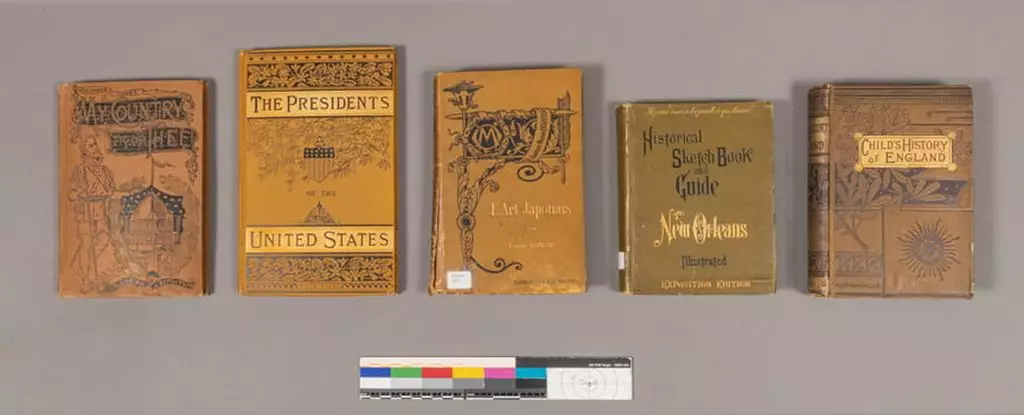Recent analysis of Victorian-era books has revealed the presence of toxic materials such as lead and chromium, once used to imbue cloth-bound books with vibrant hues. Although casual contact with these heavy metals is not likely to cause serious harm, those who handle antique books frequently, such as librarians and book dealers, are at a higher risk of exposure. The findings were presented at the Fall meeting of the American Chemical Society, highlighting the potential dangers lurking within vintage book collections.
During the 19th century, toxic dyes rose to prominence, allowing for the production of vivid hues without relying solely on natural ingredients. Arsenic, aniline, and other heavy metals were used to create vibrant greens, magentas, blacks, and purples. While these dyes were popular for their brilliant colors, they came at a high cost, leading to illness and even death for factory workers exposed to them. Although Victorian-era costuming is no longer prevalent, the legacy of toxic dyes lives on in vintage objects such as books, posing risks to those who handle them regularly.
In 2019, art conservationists identified a toxic pigment containing arsenic in a book’s cloth cover at the Winterthur Museum, Garden & Library. This discovery led to the Poison Book Project, which aims to identify books worldwide dyed with similar toxic pigments. Inspired by this initiative, Lipscomb University librarians collaborated with chemist Joseph Weinstein-Webb to analyze vintage books from their collection. Through various tests, including X-ray fluorescence and inductively coupled plasma optical emission spectroscopy, the presence of lead and chromium in high concentrations was confirmed, prompting the removal of these books from circulation.
Uncovering Unsafe Concentrations of Toxic Dyes
Lead(II) chromate, a yellow pigment containing lead and chromium, was found in some of the samples, with higher concentrations of lead than chromium. This imbalance suggests the presence of other dyes with varying metal concentrations, raising concerns about potential health risks. The research team is working to identify these substances and assess their impact on human health. Samples with excessively high lead and chromium levels were sealed in plastic and removed from circulation to prevent further exposure. The discovery of unsafe concentrations of toxic dyes underscores the importance of understanding the risks associated with vintage materials.
As awareness of toxic dyes in vintage books grows, efforts to develop safer preservation methods are crucial. By identifying and mitigating the risks associated with handling these materials, libraries, museums, and collectors can ensure the safety of both their staff and patrons. Collaborative research between chemists, conservationists, and librarians plays a vital role in uncovering hidden dangers and implementing protective measures. The presentation of these findings at the American Chemical Society meeting serves as a reminder of the ongoing need to prioritize health and safety in the preservation of cultural artifacts.
The presence of toxic dyes in vintage books serves as a stark reminder of the dangers that lurk within seemingly innocuous objects. As we continue to uncover the risks associated with these materials, it is essential to prioritize safety and develop effective preservation strategies to protect both present and future generations. By working together to identify and address the hazards posed by toxic dyes, we can ensure a safer environment for all who interact with vintage books and cultural artifacts.

